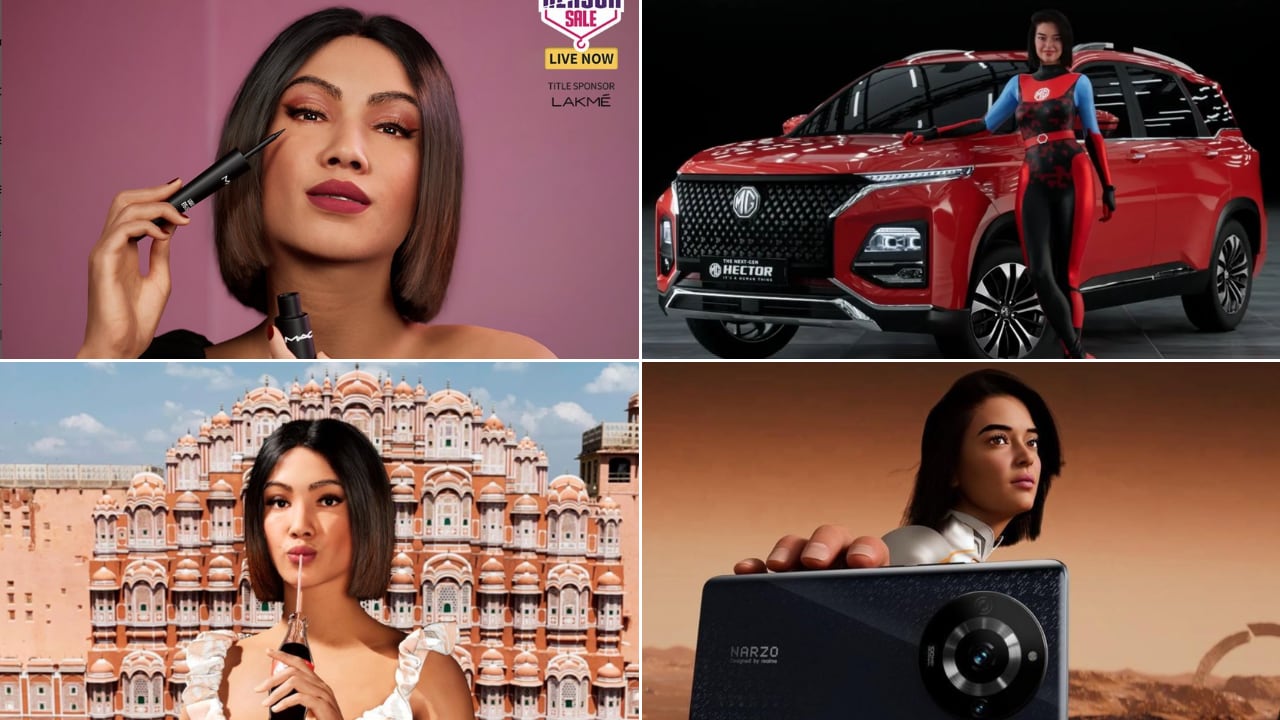Maya, a virtual fashion influencer launched by e-commerce platform Myntra, has already garnered over 1.8 lakh followers on Instagram. The company has carefully designed her attributes, which include being an emerging fashion stylist with an inclination for all things trendy – makeup and fitness, among others.
“With Gen Z’s admiration for digital avatars and their penchant for experiential tech such as immersive digital gaming and virtual reality, the introduction of Maya helps unlock the potential of the Myntra virtual universe by resonating with young, trend-first, and tech-savvy audiences,” says Myntra.
Maya joins the likes of Kyra (@kyraonig), a “model, traveller, and dream chaser,” who has over 2.5 lakh Instagram followers, and has been active on social media since January 2022. Her profile mimics that of lifestyle influencers, with regular posts of vacation photos, mirror selfies, and occasional photoshoots. While her still photos are almost human-like, the effect doesn’t quite carry over to her videos.
Kyra, created by Himanshu Goel of FUTR Studios, has already partnered with brands such as American Tourister, clothing brand Balav, Budweiser, Sunfeast Farm Lite, and MG Motors, among others.
Virtual influencers, also known as CGI influencers, are fictional computer-generated ‘people’ who possess the characteristics, features, and personalities of humans. They are becoming a force to reckon with in the influencer marketing industry, with more of them emerging on Instagram every week and more brands queuing up to get involved in this futuristic marketing strategy.
Globally, Lil Miquela is one of the most popular virtual influencers, having partnered with brands such as Nike, Calvin Klein, and Samsung. Miquela has over 2.8 million followers on the platform. Shudu, a Black model from South Africa, is another digital influencer. Korean virtual influencer Oh Rozy (@rozy.gram), developed in August 2020, has reportedly secured over 100 sponsorship deals.
Data validates the popularity of virtual influencers. According to a recent Redseer (strategy consultants) report, influencer marketing will be an estimated $ 2.8 billion -3.5 billion in 2028 as more brands leverage the credibility of influencers to promote their products. The size of the influencer community, ranging from 3.5 to 4 million influencers, presents a challenge of discoverability (showing up in a database search) for brands.
What’s in it for brands?
Virtual influencers offer brands more control over their collaborations. For instance, if a real-life influencer makes a mistake, it can be difficult to resolve, often requiring reshoots and delaying the campaign’s launch. With virtual influencers, mistakes can be erased and amended within minutes.
Pranav Panpalia, Founder of OpraahFx, an influencer marketing agency, highlights that virtual influencers provide enhanced brand control, as they can be designed and curated to align precisely with the brand’s image and messaging.
“They also offer scalability and versatility, seamlessly integrating various digital platforms and reaching a wider audience,” he adds.
They are also more affordable.
“In the nascent phase, virtual influencers are reasonably priced. They are neither cheap nor expensive and are priced similarly to mid-sized influencers,” says Panpalia.
Therefore, brands are quickly embracing the virtual influencer trend.
Aman Gupta, Co-founder and Chief Marketing Officer at boAt, tells Storyboard18 that the company chose to partner with Kyra for the launch of tech-advanced neckbands. boAt Labs partnered with Dirac, a global audio-tech giant, to create Rockerz 330 ANC and Rockerz 333 ANC, which introduce the brand’s latest audio technology – Crystal Bionic Sound, that optimizes the sound for richer vocals and deeper bass.
“The choice of creator for us comes from the narrative we want to build as a brand. While launching a product that highlighted technological superiority towards building the future of audio, working with Kyra, then India’s first virtual influencer, helped reiterate and build that story well for us,” he says.
It generated a lot of positive conversations for the brand and elevated our marketing superiority of using the next-gen way of advertising,” shares Gupta, who adds, “We crossed 10 million reach organically with our posts featuring Kyra.”
What about trust and authenticity?
Despite having so much in their favour, virtual influencers can lack trust and authenticity. They may come across as too tailored. Mitesh Kothari, Co-founder and Chief Creative Officer at the digital agency, White Rivers Media, believes that when it comes to virtual influencer advertising, ensuring consumer trust is a crucial factor.
“A clear disclosure of the virtual identity of the influencer, along with partnership labels, is vital. The overall personality and values of the influencer should resonate with the brand message and nothing should be done just to forcibly utilise the tech. Brands should completely steer clear of any false personal experiences with the products, as a breach of trust can damage the entire consumer relationship,” he notes.
They have their share of controversies as well. For instance, in 2019, a Calvin Klein ad showing supermodel Bella Hadid sharing a kiss with digital influencer Lil Miquela was slapped with “queerbaiting” accusations. Moreover, virtual influencers are also shown as having nearly perfect bodies and skin, which sets unrealistic standards of beauty and fitness for young consumers.
Kothari agrees that the digital world has become a major part of life today, and that the body image portrayed by virtual influencers can potentially contribute to how consumers feel.
“Virtual influencer advertising is a path that should be walked responsibly, with body dysmorphia already being an important issue. With accountable guidelines and strategies that prioritise the well-being of the audience, we can minimise the potential harm to anyone’s mental health and body image,” he adds.
It seems like the evolving virtual influencer business can impact the overall landscape of influencer marketing over time. The two worlds may merge, leading to newer content formats, newer experiences for consumers, and ultimately many new possibilities for engaging with the audience.
While human influencers continue to dominate the marketing landscape at present, the virtual counterpart has also been gaining significant attention and has certainly added a new layer of creativity to the influencer marketing ecosystem. Only time will tell whether machines will take over the influencer world too.
